Being a field trip leader is a rewarding experience for some people. People who serve as field guides get the opportunity to take people to interesting locations they might have never seen otherwise. In our hobby of Rocks and Minerals, we are looking for places where samples of minerals can be found, such as minerals featuring distinct crystals, or solid minerals, things a lapidary artist would enjoy, to cut and polish. Fossils, natural formations and other odds and ends round out the range of natural science themed excursions. For those individuals who step up to the challenge of field trip leaders and guides, this is my tale, take from it the bits of advice I, Justin Zzyzx, discovered first hand.
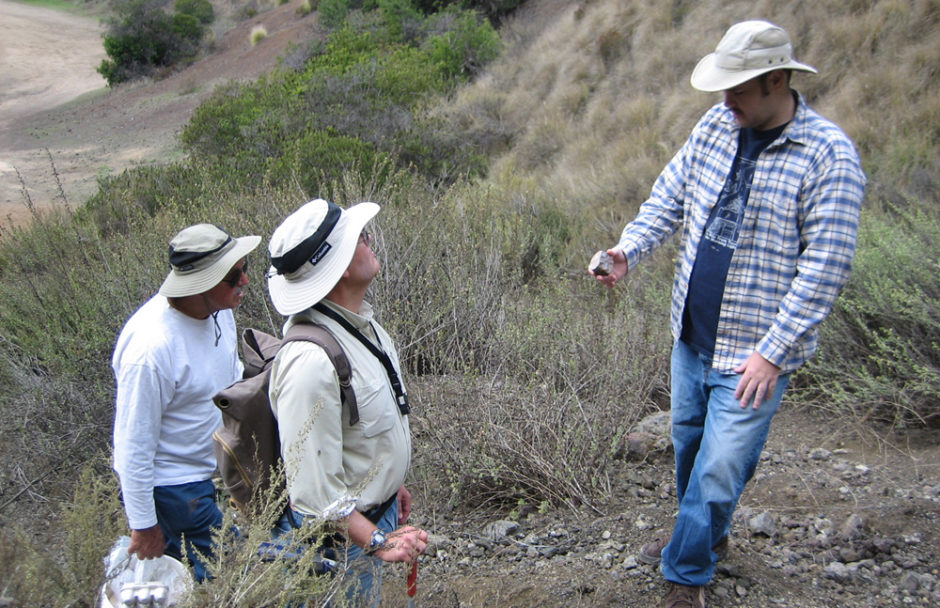
Over the course of a decade, I have lead mineral collecting field trips for individual clubs I was a member of, clubs I was not a member of, the California Federation of Mineralogical Societies, public field trips to advertise my natural science themed art gallery, paid trips with tickets for Atlas Obscura and for over a year, a private run monthly field trip service. During that time I had to research locations, go on terrible trips, go on amazing trips, get lost, get found, get insurance, advertise, fix cars, fix people, change plenty of tires, pop plenty of tires and met hundreds of great people.
Becoming a Field Trip Leader –
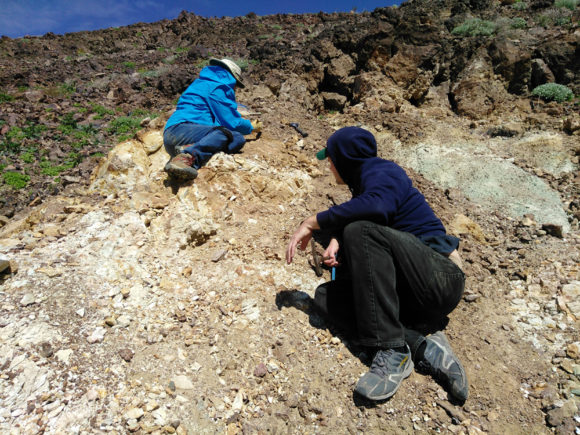 If you are just thinking of stepping into the ring as a field trip leader, my path starts like many others, going to a local rockhound club. From here your path can follow two directions, simply participating in whatever outings the club has and taking the experience from that, or, by furthering your experience by being a helpful participant and offer to lead additional trips or fill in for the field trip leader a month or two. Many clubs experience a bit of burn out when it comes to field trips. It is a somewhat stressful job to be in charge of a group of people’s entertainment. As such, many clubs find themselves in dry spells when it comes to field trips. Sometimes a little bit of fresh energy is a much needed thing, so check out the local scene and see what the general vibe is towards local collecting spots. Club members can be a wonderful source of information on local collecting spots. In addition to the first hand sources of going on field trips with leaders, there is plenty of research to be done with books, the internet and field research.
If you are just thinking of stepping into the ring as a field trip leader, my path starts like many others, going to a local rockhound club. From here your path can follow two directions, simply participating in whatever outings the club has and taking the experience from that, or, by furthering your experience by being a helpful participant and offer to lead additional trips or fill in for the field trip leader a month or two. Many clubs experience a bit of burn out when it comes to field trips. It is a somewhat stressful job to be in charge of a group of people’s entertainment. As such, many clubs find themselves in dry spells when it comes to field trips. Sometimes a little bit of fresh energy is a much needed thing, so check out the local scene and see what the general vibe is towards local collecting spots. Club members can be a wonderful source of information on local collecting spots. In addition to the first hand sources of going on field trips with leaders, there is plenty of research to be done with books, the internet and field research.
Books and Your Research Library –
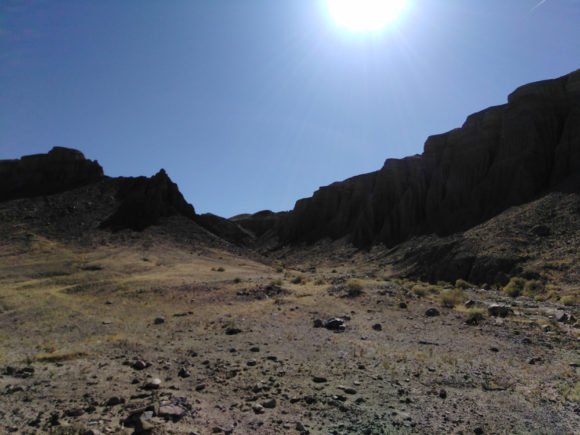 Over the years of field collecting I’ve made it a habit to buy as many field guides from any age and any print style. Locations that might have been popular 80 years ago, then fallen out of favor might resurface from investigating old field guides. Important information that got skipped over in future editions, or vice versa, information in contemporary guides that might save you time! From this information field research can begin, because one of the most important rules of leading a field trip should be…One Should be INTIMATELY FAMILIAR With the Location Before Taking Any Group. For there could be fewer things in life as painful as wasting the time of any number of people expecting you to take them somewhere and understand what the deposit is about.
Over the years of field collecting I’ve made it a habit to buy as many field guides from any age and any print style. Locations that might have been popular 80 years ago, then fallen out of favor might resurface from investigating old field guides. Important information that got skipped over in future editions, or vice versa, information in contemporary guides that might save you time! From this information field research can begin, because one of the most important rules of leading a field trip should be…One Should be INTIMATELY FAMILIAR With the Location Before Taking Any Group. For there could be fewer things in life as painful as wasting the time of any number of people expecting you to take them somewhere and understand what the deposit is about.
You should own a copy of this field guide and go Rockhound Barstow California!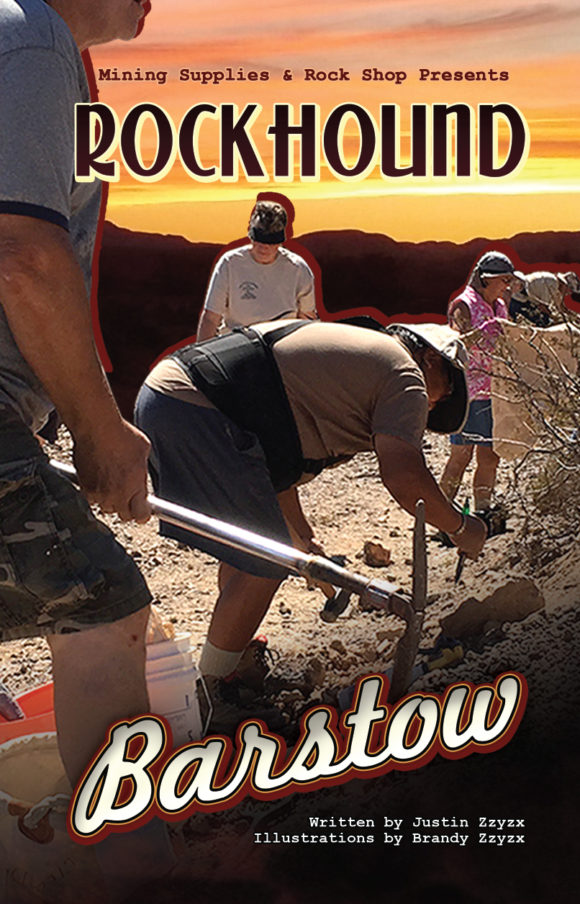
You can find contemporary and classic books for sale on amazon and ebay by using the links on this page http://wheretofindrocks.com/field-guides/ and also at your local bookstores. I’ve personally had the best luck at mineral shows and buying on ebay and amazon. ebay tends to be the place where you can find all sorts of oddball field guides and lots of regional guides you would only find online and at local rockshops of the area. In addition, members of your local rockhound community can be the best sources for literature, as they might be able to direct, sell, loan or otherwise help with sourcing local rockhounding literature.
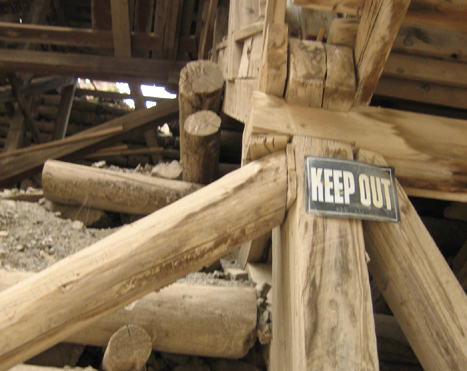 The local library is often a wonderful source for local mineral collecting literature. For example, while visiting a location 2500 miles away from my home, I found at the library some documentation talking about the mining districts in the 1910’s. I then matched these locations up to a current map and saw that TWO of these location were on land that I could visit and inspect for minerals. Dig deep and you can be rewarded with historical information that can turn up some amazing re-discovered mineral deposits.
The local library is often a wonderful source for local mineral collecting literature. For example, while visiting a location 2500 miles away from my home, I found at the library some documentation talking about the mining districts in the 1910’s. I then matched these locations up to a current map and saw that TWO of these location were on land that I could visit and inspect for minerals. Dig deep and you can be rewarded with historical information that can turn up some amazing re-discovered mineral deposits.
Initial Field Research –
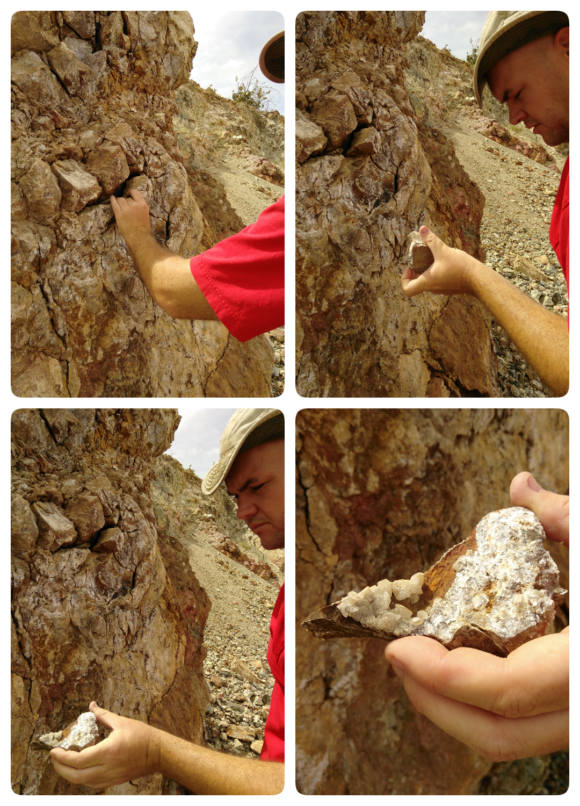
Visit the Location Beforehand and Collect Samples
I would rather not take people on a wild goose chase. I did that one time and if I can help you avoid it, my heart will sing. Early in my days of leading field trips, I took a group of 8 individuals up the Garcia Trail in search of the Felix Fluorite deposit, just overlooking a vast neighborhood near Azusa California. What I did not know was, the deposit is not UP the Garcia trail, that is just where you START, after 100 feet you hop off and up to the deposit via a fire road that is snaking alongside the hills, not going STRAIGHT up it, like the Garcia Trail. After an hour of strenuous hiking, several of the participants cursed my name and vowed to never go on another trip with me. At that moment I vowed to never make that mistake again!
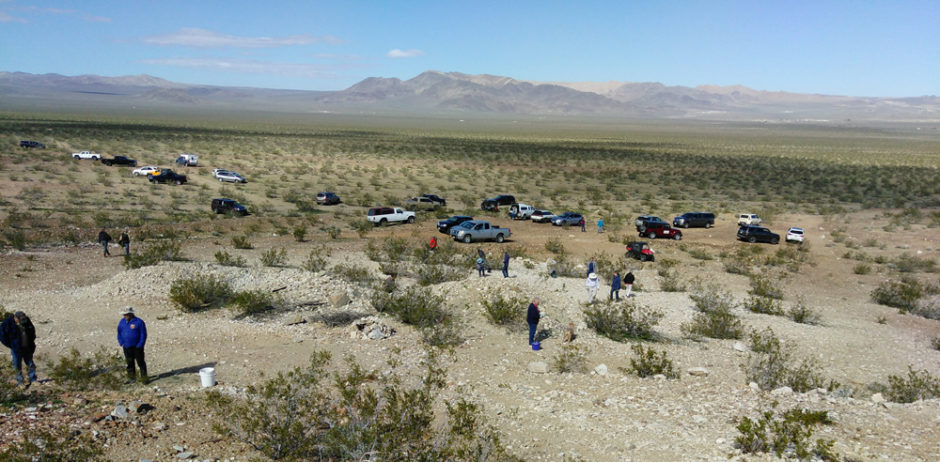
Now I make sure I have personally visited any location I plan on taking people to, no surprises. I try to map out alternative directions, ease of use, parking areas and identify where the guests will be collecting and locate a few samples to have on hand on that day. It might be easy to find parking for a handful of cars, but a few times I have had upwards of 50 vehicles all pouring down one lane tracks in the desert, wondering where they will all line up and how they will leave. At the very least, all locations must be visited twice, once beforehand and once for the actual trip. The best locations are ones that you are VERY familiar with, ones you have spent time visiting, researching and so forth. There are several locations I have visited well over a dozen times, places I could, and in fact, have given, educational talks about. That is how well I want to know a location I will take people to. I mean, a little less than that works too, but to really love and understand a deposit, that is a place that will love you right back.
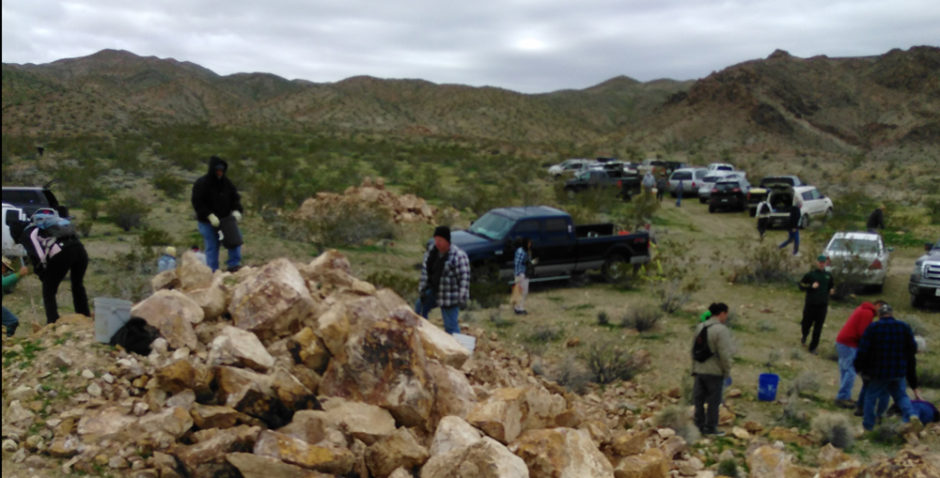
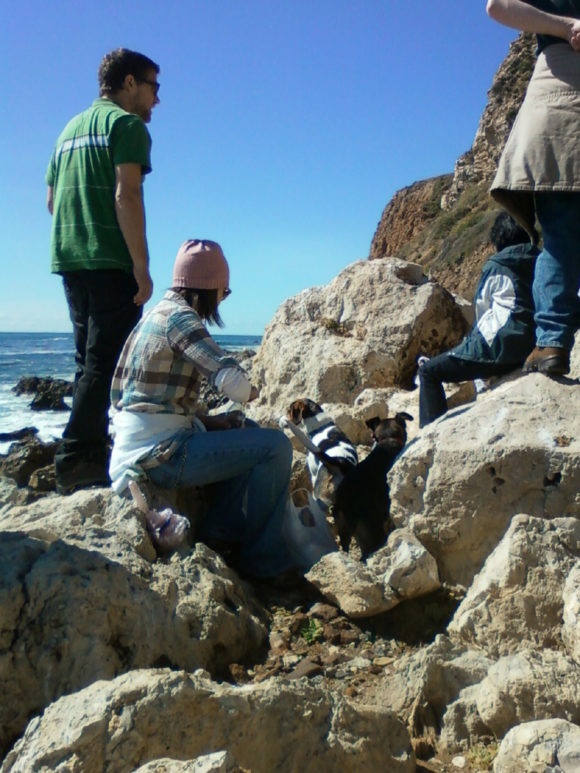
For example, Rancho Palos Verdes California. It is a PERFECT location for field trips, for research, for developing literature of its own. RPV (and the surrounding areas of this peninsula off the south west of Los Angeles Harbor contains a variety of crystallized minerals, fossils and plenty of public areas where collecting is permitted and encouraged. It has a story involving a land deal/mining claim gone dirty to allow for housing tracts in this once rural farmland. It has ample scientific study material to draw from, both past and current, interesting geological features, along with plenty of natural features to keep people interested. I have given no less than 20 trips to RPV to collect crystallized dolomite, barite and play in the tidepools with the starfish. I have given a 45 minute talk to several clubs in the Southern California area on the subject of this very peninsula. That is why field trips to this location are a favorite of mine to lead, can be done at a moments notice and so forth. If I was a field trip leader of a club in Southern California, a trip to Rancho Palos Verdes would be a yearly pilgrimage.
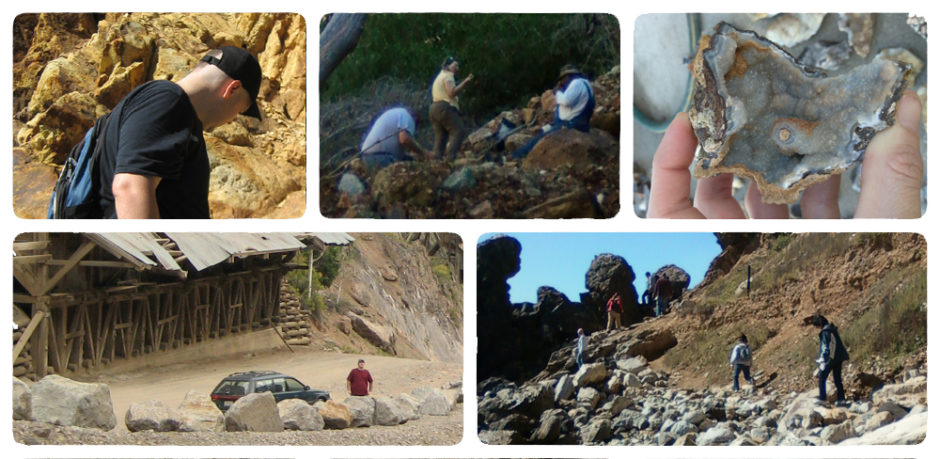
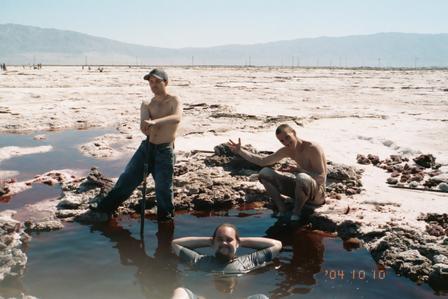 I spent at least 3 years doing weekend adventures with my working friends. Many of my now lifelong friends joined me for many of our private adventures. You can be sure that several places visited during that time would fit right into my list of regular locations. It is ALWAYS advised to have one or more friends out with you when exploring. Safety. You have no idea how many crazy adventures would have been that much worse if I did not have compatriots. It is these trips that, when they end in failure, who cares? You are hanging out with like-minded individuals, enjoying the trip. Finding the minerals, on private prospecting trips can often be a happy accident. On a guided trip, that BETTER not be the case!
I spent at least 3 years doing weekend adventures with my working friends. Many of my now lifelong friends joined me for many of our private adventures. You can be sure that several places visited during that time would fit right into my list of regular locations. It is ALWAYS advised to have one or more friends out with you when exploring. Safety. You have no idea how many crazy adventures would have been that much worse if I did not have compatriots. It is these trips that, when they end in failure, who cares? You are hanging out with like-minded individuals, enjoying the trip. Finding the minerals, on private prospecting trips can often be a happy accident. On a guided trip, that BETTER not be the case!
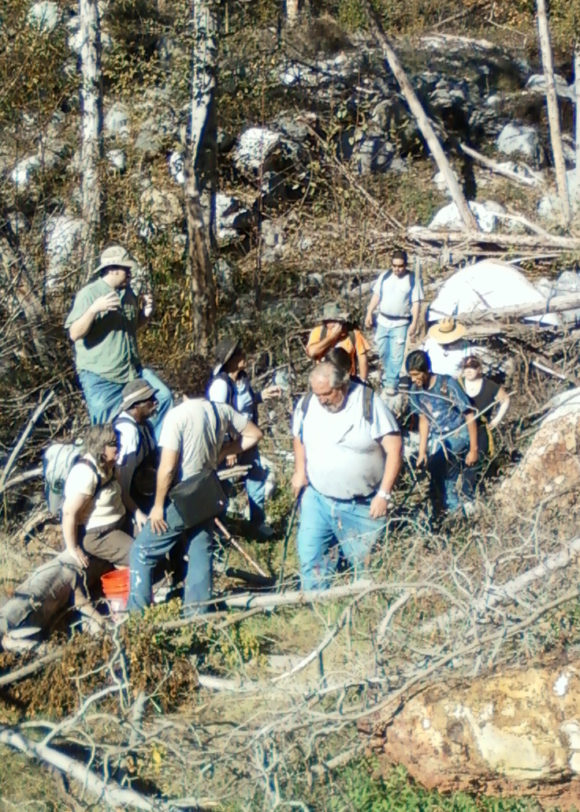 My crew of local collectors have a list of locations we visited a half a dozen times or more before we found them. Like stupid STINKO california…well, That is what we call it. Cinco, a location for Feldspar crystals, it is SO EASY to show you EXACTLY where it is on a map today, but for our group, we went to that place nearly 10 times before finding the correct deposit. The blackberry bushes used to be my bane at the Mount Baldy Corundum location, now, I try to plan a trip there in August to enjoy the fruits along the PATH into the deposit that we could not find until our 9th trip into the river valley. I can easily feel confident taking up to 60 people into that location, knowing all of them will find quality materials, that it is relativity safe, easy to get to and legal to collect at.
My crew of local collectors have a list of locations we visited a half a dozen times or more before we found them. Like stupid STINKO california…well, That is what we call it. Cinco, a location for Feldspar crystals, it is SO EASY to show you EXACTLY where it is on a map today, but for our group, we went to that place nearly 10 times before finding the correct deposit. The blackberry bushes used to be my bane at the Mount Baldy Corundum location, now, I try to plan a trip there in August to enjoy the fruits along the PATH into the deposit that we could not find until our 9th trip into the river valley. I can easily feel confident taking up to 60 people into that location, knowing all of them will find quality materials, that it is relativity safe, easy to get to and legal to collect at.
Make a List of Viable Locations –
This step is highly variable. Some guides focus on just one or two locations. Perhaps they lead a regular trip for one specific group. My local attraction near my house does a private tour of underground workings of an old silver mine. That is the only tour they offer. They know that tour REALLY well. I, on the other hand, can take you to 12 locations, easily, to collect minerals and lapidary materials within a five mile radius of that place. Having access to open BLM land makes the task quite a bit easier. Depending on the area you are in, having a location where you can bring small and large groups to might be a challenge. One option is to limit the amount of people that can go on a trip. This is not an uncommon solution.
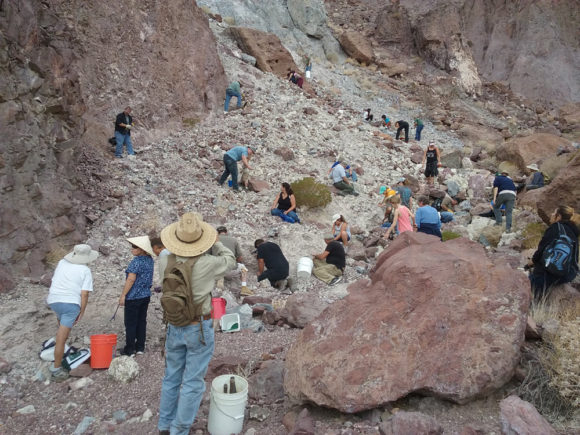 Once you are familiar with your area, make a list of places and start working the pro’s and con’s on taking people to the location. Access, Safety, and Material. I do not mind taking people to a location that is “sub-par” like, for instance, the tiny quartz crystals by Mount Baldy are not show-stoppers, but they are THERE and such fun to find and in such a beautiful location, it was worth-while, even if the material is just so-so. I also love to do double trips, if possible, go to a location that is good for lapidary and one that is good for crystals. Some trips I’ve lead have gone to three locations in one day without any complaint from the collectors. I find most collectors are ready to head out after an hour or so, moving them to a few locations can stretch their interest out a few hours. Pay to play locations are ok, most of the time. Not the scam salted dig sites, but the gem dumps in Southern California, the Sunstone mines of Oregon, the Quartz mines of Herkimer New York. Many of these locations make great trips for rockhounding groups. Don’t be a afraid to find the best places to use in your field trip list.
Once you are familiar with your area, make a list of places and start working the pro’s and con’s on taking people to the location. Access, Safety, and Material. I do not mind taking people to a location that is “sub-par” like, for instance, the tiny quartz crystals by Mount Baldy are not show-stoppers, but they are THERE and such fun to find and in such a beautiful location, it was worth-while, even if the material is just so-so. I also love to do double trips, if possible, go to a location that is good for lapidary and one that is good for crystals. Some trips I’ve lead have gone to three locations in one day without any complaint from the collectors. I find most collectors are ready to head out after an hour or so, moving them to a few locations can stretch their interest out a few hours. Pay to play locations are ok, most of the time. Not the scam salted dig sites, but the gem dumps in Southern California, the Sunstone mines of Oregon, the Quartz mines of Herkimer New York. Many of these locations make great trips for rockhounding groups. Don’t be a afraid to find the best places to use in your field trip list.
Insurance –
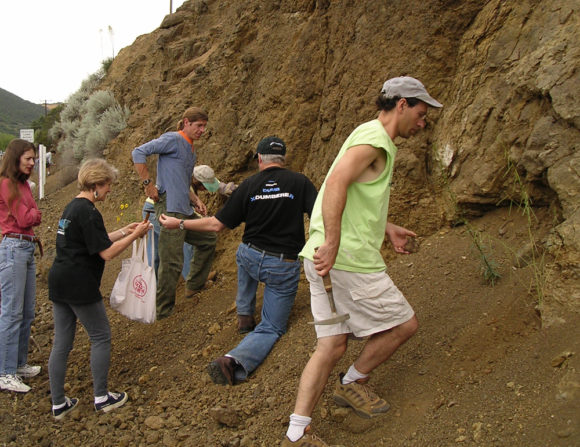 One of the perks with rockhound groups is by being a member you are covered by the Federation’s insurance policy. Rockhounding can be dangerous. It is up to me to create as safe as an experience as I can. Accidents happen. Accidents can be expensive. You better be insured. To make sure you are covered, it is worthwhile to purchase liability insurance if you are leading private field trips. If it is just myself and a couple friends and an accident happens, that’s up to fate. If something happens while on a sanctioned club field trip, the Federation’s insurance policy covers it. When I lead field trips for a public tour group as a freelancer, they covered the insurance policy. When I lead private field trips, it is my duty to provide insurance coverage. In my experience it is typical to find a rate for a year of 1 million dollars in liability coverage for around $800.00 USD as of 2017. Insurance is a must have.
One of the perks with rockhound groups is by being a member you are covered by the Federation’s insurance policy. Rockhounding can be dangerous. It is up to me to create as safe as an experience as I can. Accidents happen. Accidents can be expensive. You better be insured. To make sure you are covered, it is worthwhile to purchase liability insurance if you are leading private field trips. If it is just myself and a couple friends and an accident happens, that’s up to fate. If something happens while on a sanctioned club field trip, the Federation’s insurance policy covers it. When I lead field trips for a public tour group as a freelancer, they covered the insurance policy. When I lead private field trips, it is my duty to provide insurance coverage. In my experience it is typical to find a rate for a year of 1 million dollars in liability coverage for around $800.00 USD as of 2017. Insurance is a must have.
Safety and First Aid –
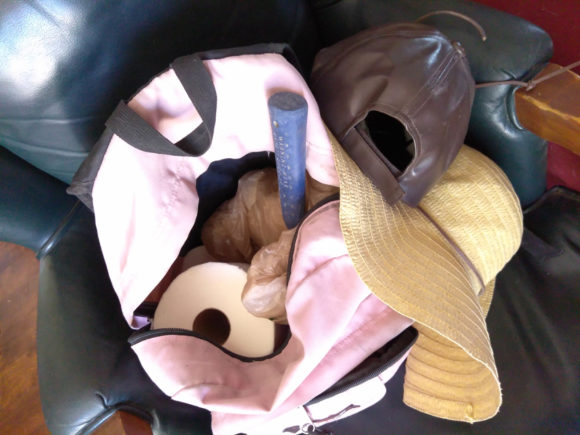 There are two things to consider – How can we prevent an accident from happening BEFORE it does and How can we be prepared for an accident if it does happen. My first step is making sure that everyone on a trip I lead understands the basic “Rules of Rockhounding” with my own little tweeks. My personal add ons are –
There are two things to consider – How can we prevent an accident from happening BEFORE it does and How can we be prepared for an accident if it does happen. My first step is making sure that everyone on a trip I lead understands the basic “Rules of Rockhounding” with my own little tweeks. My personal add ons are –
#1 – Leave all the animals alone. You can do what you want on your own time, but with me today, please leave all animals, lizards, bugs, birds and other wildlife alone.
#2 – Children love to climb, but not today. If you see a really amazing loose tallus slope to slide down, more power to you, but not today on this trip.
#3 – 100% NEVER allowed to enter mine tunnels, adits or undercut a digging area. Come back on your own free will, I tell the visitors, if you want to explore underground, however I advise against it 100% of the time if for NOTHING else then, see the part about Insurance.
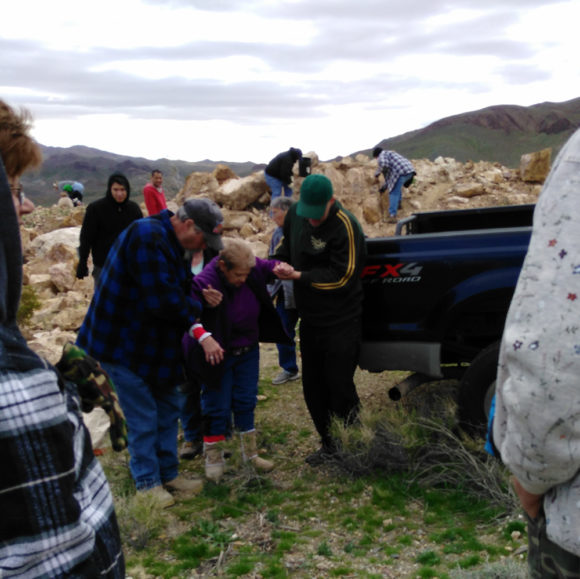
Even while you must tend to an injured field tripper, other participants are unaware, and are still rock hounding. Both are your responsibility.
If I allow any of these to happen, I could potentially void the insurance coverage. What we need to avoid is Negligence. In addition, being trained by your national safety organization
in First Aid, like the NSC here in United States is a valuable skill for any human. Click here to learn about First Aid Training by the NSC.
A first aid kit is a must have for every field trip leader. At the very least you should be able to issue ibuprophen, bandages for minor cuts and scrapes, at the worst, be ready for someone who could break a bone or sustain an eye injury. You make sure people who are hammering are wearing appropriate safety gear and being mindful of those around them, and then, making sure that people exploring are aware of the people digging, you can avoid eye injuries. Sure, it can seem like you are “restricting” some people’s fun, but safety should always be a TOP concern.
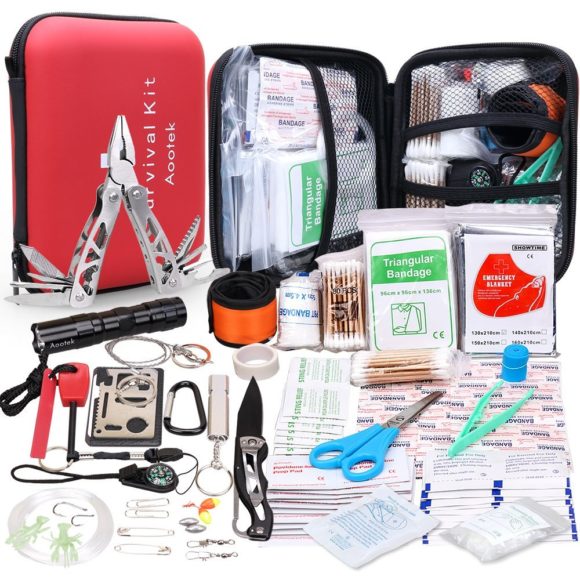
A first aid kit like this is perfect for the rockhound field guide
You can get this on Amazon for a steal! https://amzn.to/2sshYj1
Preparing for Vehicle Troubles –
Flat tires, busted oil pans, bring to me your problems, oh, field trippers and I will make sure to spend the extra hour to make sure you make it home!
Think about having the following…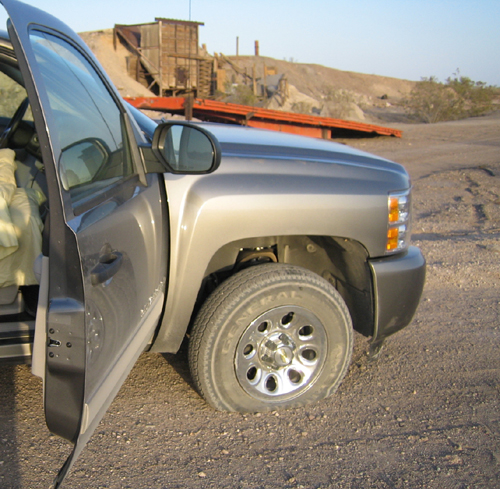
• Road building tools. Usually the same stuff as rockhounding, make sure you can dig out someone who is stuck in mud or sand.
• Carpet scraps or two, for under wheels of stuck vehicles.
• JB Weld Clay. Holes in various pans can be very problematic. JB Weld clay can be used to patch holes in oil and transmission pans.
• Oil and transmission fluids. If space permits, having a spare quart or 5 can be VERY handy.
• Duct Tape – more patching!
• Tire inflator – Like this one
• Tire Patch kit – If it was a puncture by a sharp tire on the tread, this is very handy!
• Jumper cables – because, dang it, we left the lights on and the radio on and the phones charging and I don’t know why this dang thing went dead…
Promotion and Options –
There are several reasons WHY you are interested in being a field guide. You might be leading people to one or two locations because it is commercially related to another business, like mine owner tours to their own mine. You might want to participate in your local club, hopefully you are already and simply reading this for fun. You might see a commercial viability in leading field trips, as there is, to an extent.
Basically, whatever I’m covering in this niche can be applied to most natural and outdoors topics. I could just replace the words rocks and have been talking about hunting antique marbles, making gravestone rubbings, geocatching or IDK, whatever topic someone might want to share with a group of interested people.
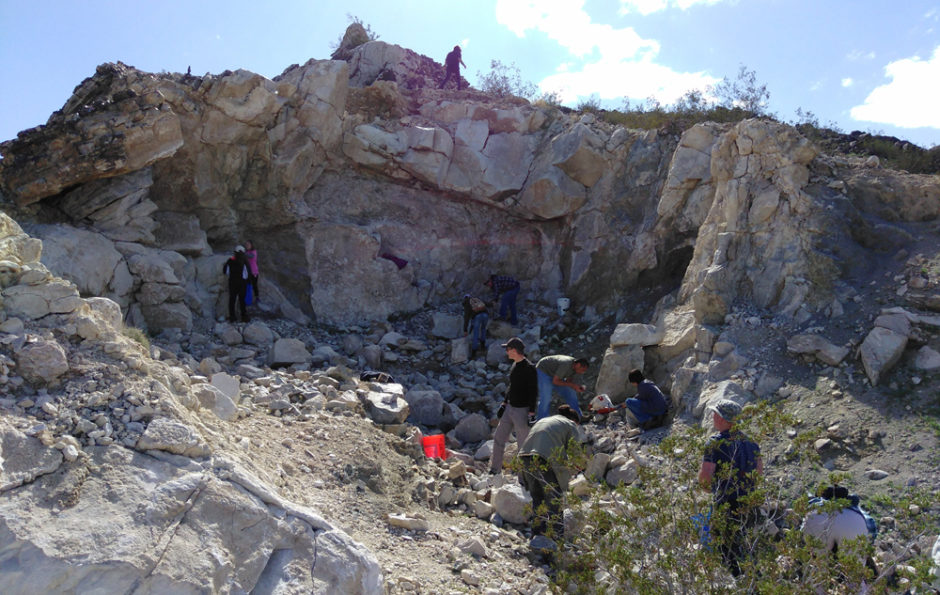
Here is what I did.
In 2003-2006 I lead field trips for various clubs and one trip for the California Federation, as well as attended many lead by members of the Mineralogical Society of Southern California.
During 2006-2008 I would simply take friends out collecting and join club field trips. During this time we were also traveling for 6 months filming over 250 mineral collecting locations all across America and Canada.
In 2009 I started doing free public field trips where I would simply post on various online bulletin boards in the Los Angeles Area and invite people to join me at a specific time and place for the trip. I would have between 2-20 people join me on those trips.
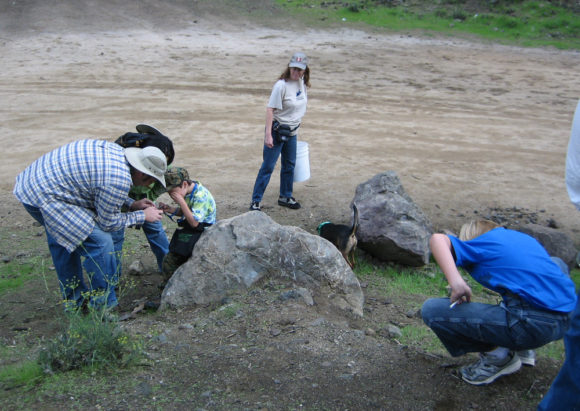 2010-2012, I used these to promote my natural science art gallery. We would host quarterly, free public field trips.
2010-2012, I used these to promote my natural science art gallery. We would host quarterly, free public field trips.
2013-2014 I was being contacted by various groups and individuals to lead private paid field trips. My favorite was Atlas Obscura, who would sell the tickets for a field trip for $40, they would sell out within a week and those people were some of the happiest rockhounds I ever met!
Around 2015 I had moved to the high desert and I was still doing free public field trips. During one of these trips I met Cyndy and Lois, who were local club members in the Victorville/Hesperia area and informed me that the local clubs were lacking field trip leaders. They opened a wonderful rock shop in Hesperia and it was not long before we came up with the idea of doing a paid monthly field trip. For $40 you got a 6 month subscription to the field trip list. Once a month you would get an email telling you where and when.
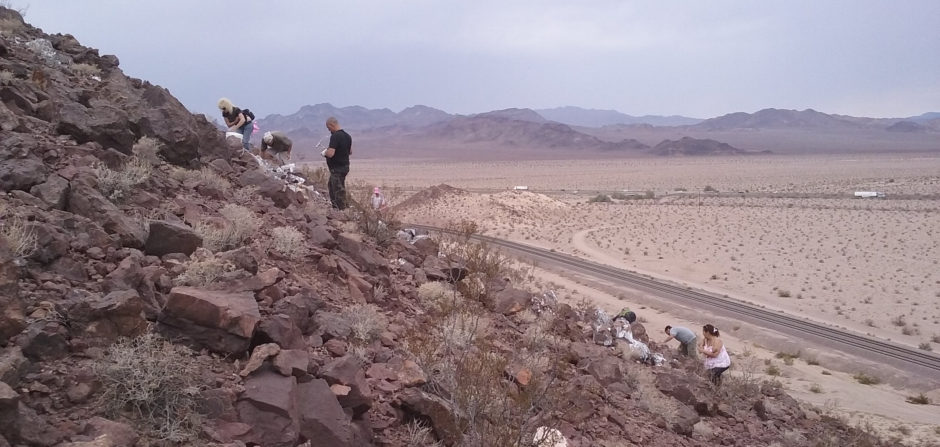
For those 6 months, you could come, or not come, at your own discretion to each month’s trip. The costs would be insurance and the tour guide’s wages, but for the sake of the business readers, let’s say, $800 for a year of insurance, let’s say $3000 for your field guide ($250 per month), you are at 100 users per year to break even, or 50 paid tickets every 6 months. Anything above that is gravy, so if you are a shop owner and want to try something like this, there is a good reference number. I’m not 100% on how many tickets were sold during my 18 months of field trips, however, I’m certain we beat these minimums quite handily.
Conclusion –
If you want to get into this position as a member of a rock club or to promote your local interest, if you want to simply share the joy of Rock Hounding to the public, it is best to be prepared with;
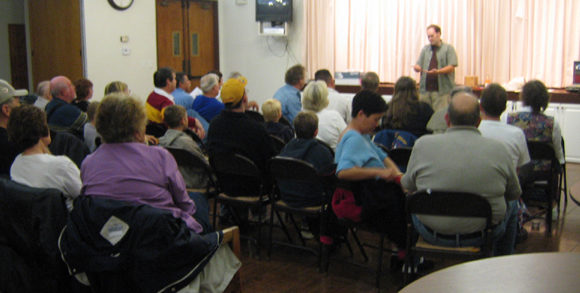 Knowledge
Knowledge
Time Devotion
Safety Training
Reasonable People Skills (hopefully)
For this, you can have the joy of spreading the topic of your interest and parlay that into writing articles, giving talks and additional paid gigs. If you found this article useful, feel free to link to it on your club website, facebook account or include parts of it for reprint in your club newsletters.